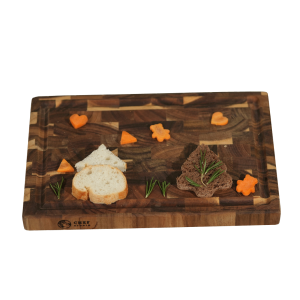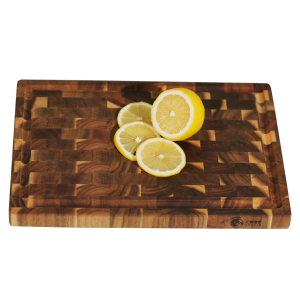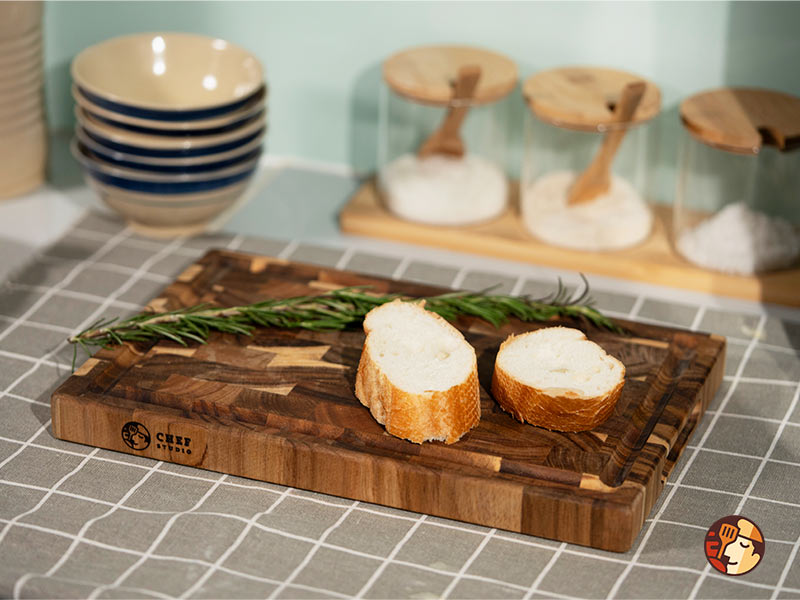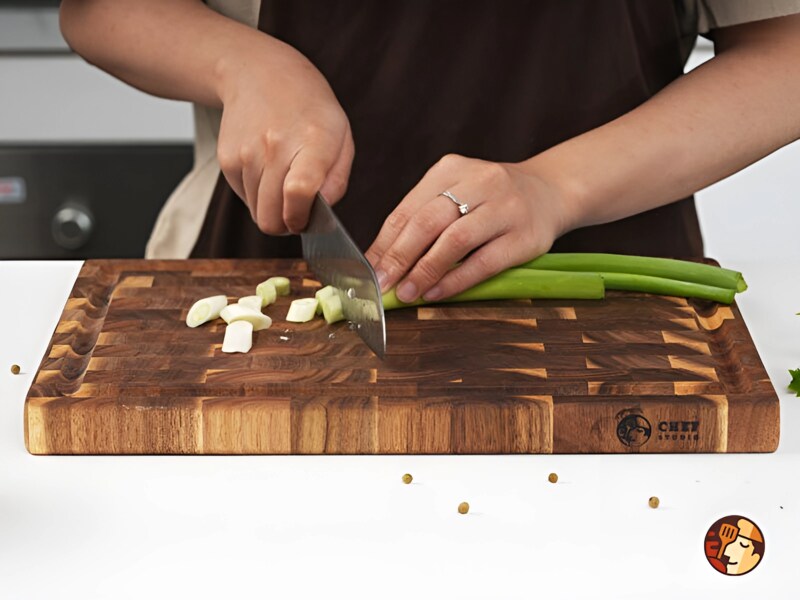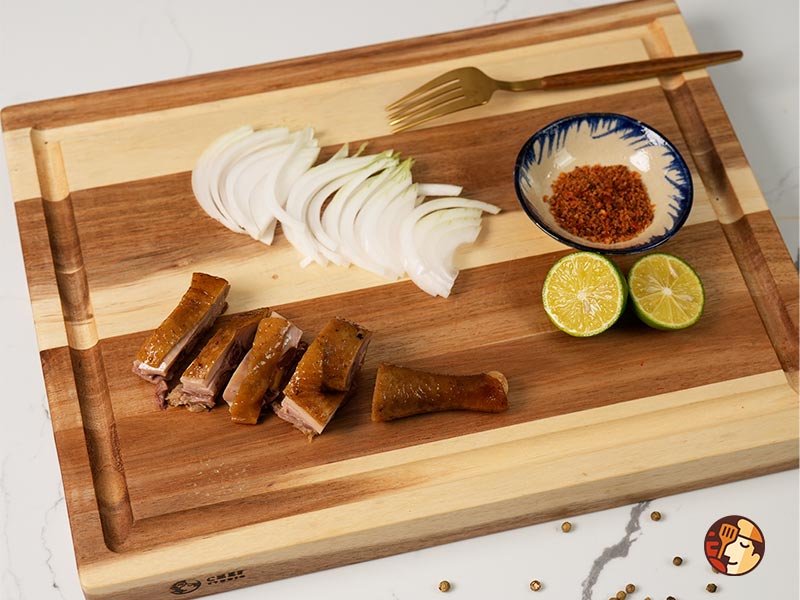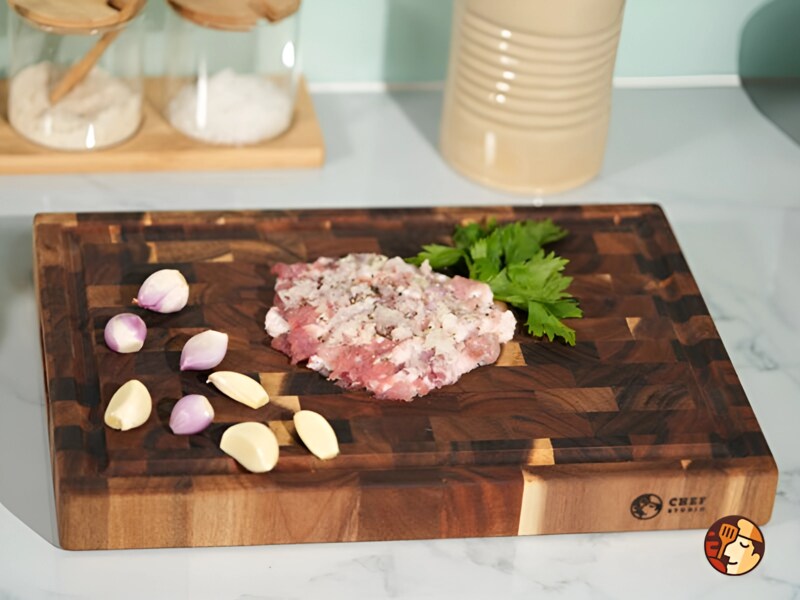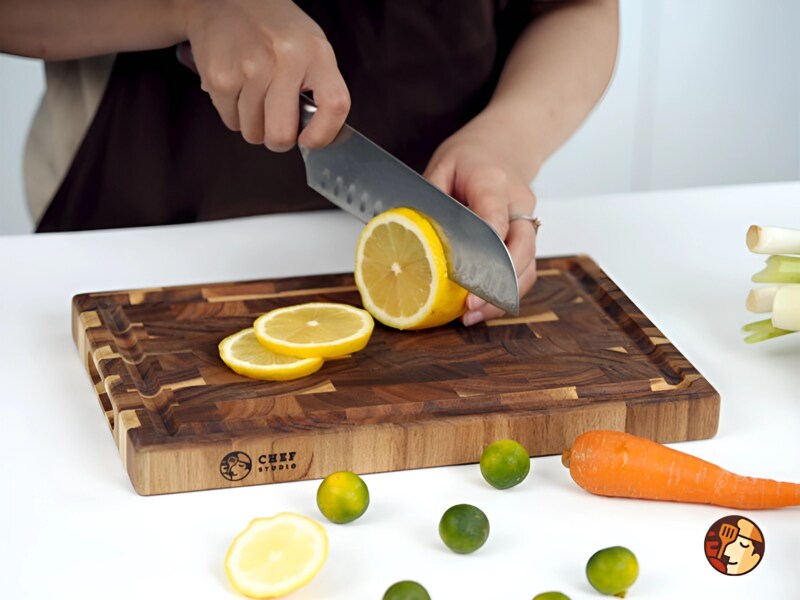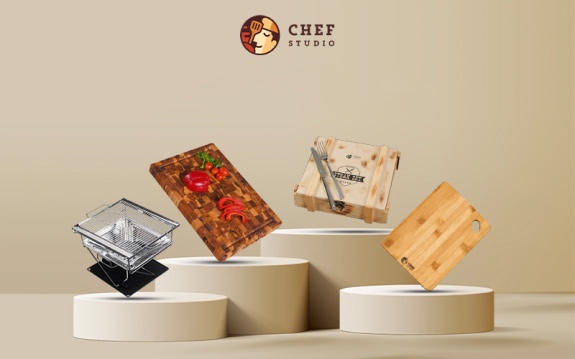Are you in search of a kitchen essential that combines both functionality and beauty? Look no further than Chef Studio‘s exquisite Acacia cutting board collection. Crafted from the finest Acacia wood, these cutting boards are more than just kitchen tools – they’re a statement piece for your culinary space.
Introduce the Acacia cutting board
Acacia trees are prevalent in tropical and subtropical areas such as Africa, Asia, and Australia. Belonging to the pea family, Fabaceae, they are among 160 other trees and shrubs in the same botanical grouping.
Acacia wood, known for its hardness, finest, and natural resistance to water, is particularly suitable for chopping boards. Acacia wood cutting board at Chef Studio is safe due to its tight grain structure and natural oils making it highly resistant to moisture absorption and bacterial growth, ensuring a hygienic surface for food preparation.
Moreover, the hardness of acacia wood makes it ideal for cutting, chopping, and slicing without damaging the knife edge.
Chef Studio officially opens for sale acacia wooden cutting boards with 3 popular sizes:
- Small cutting board: 20 x 30 x 2.5 (cm)
- Medium size chopping board: 25 x 35 x 2.5 (cm)
- Chopping board medium size: 25 x 35 x 3.5 (cm)
Acacia cutting board pros and cons
Are acacia cutting boards good or safe? Let’s learn about acacia wood cutting board pros and cons:
Pros
- Durability: Acacia wood cutting board is known for its durability and hardness, making it resistant to scratches, dents, and other forms of damage.
- Safe for health: Chef Studio uses safe glue, does not contain formaldehyde, and does not detect SVHC substances to produce premium Acacia cutting boards.
- Natural Beauty: The Acacia chopping board boasts a beautiful natural grain pattern and warm color tones, adding an aesthetic appeal to any kitchen.
- Knife-Friendly: The hardness of the Acacia wooden chopping board makes it gentle on knife edges, reducing the likelihood of dulling or damage.
- Moisture Resistance: The Acacia cutting board contains natural oils that help repel moisture, making it less prone to warping, cracking, and bacterial growth.
- Eco-Friendly: Acacia wood is a sustainable option as it comes from fast-growing trees that require minimal resources for cultivation.
Cons
- Maintenance: Like all wooden cutting boards, acacia boards require regular oiling and proper maintenance to preserve their appearance and performance.
- Sensitivity to Heat: Acacia wood may be sensitive to extreme heat, which can cause damage such as warping or cracking if exposed to high temperatures.
- Availability: While acacia wood is popular, finding a high-quality acacia cutting board may be challenging in some regions, leading to limited availability.
Above are our objective reviews about the Acacia cutting board. We hope you have more information and know whether the Acacia cutting board is good or not so that you can choose a suitable cutting board for your kitchen.
How to care for and maintain Acacia chopping board?
If you want to keep your cutting boards durable and new for as long as possible, you must know how to care for Acacia wood cutting boards properly. Follow these simple acacia cutting board care instruction steps:
How to clean acacia wood cutting board?
After each use, it’s important to clean your acacia wood cutting board thoroughly. Simply wash the cutting board with warm, soapy water using a sponge or soft cloth. However, it’s crucial to avoid soaking the board in water or putting it in the dishwasher, as excessive moisture can lead to warping or cracking over time.
Drying
Thoroughly dry the cutting board with a clean towel after washing to prevent moisture buildup. Allowing it to air dry completely before storing is the best acacia wood cutting board maintenance step to avoid mold or mildew growth.
Do you need to oil Acacia wood cutting board?
Yes, oiling is a significant step in Acacia cutting board care. While Acacia wood is naturally rich in oils that help protect it from moisture and bacteria, applying food-grade mineral oil or beeswax can enhance its longevity and appearance.
Oiling the cutting board periodically helps maintain its natural luster, prevents drying and cracking, and extends its lifespan. However, it’s essential to note that excessive oiling can lead to a greasy surface and may affect the taste of food.
Therefore, it’s recommended to oil an Acacia wood cutting board sparingly, allowing the wood to absorb the oil and wiping off any excess.
To properly maintain your cutting board, use a clean cloth to apply oil or wax onto the surface, paying special attention to dry or exposed areas. Allow the oil to seep into the wood for several hours or overnight, ensuring thorough penetration.
Afterward, wipe off any excess oil to achieve a smooth and conditioned finish. This process helps nourish the wood, keeping it hydrated and protected against moisture, thereby prolonging the lifespan of your cutting board.
Avoiding heat and sunlight
To maintain the quality and longevity of your acacia cutting board, it’s essential to keep it away from direct heat sources like stovetops or ovens. Exposure to high temperatures can cause warping or cracking, compromising the integrity of the board. Similarly, minimizing its exposure to direct sunlight is crucial as UV rays can fade the wood over time, affecting its appearance.
By following these precautions and storing your acacia cutting board in a cool, dry place when not in use, you can ensure its durability and preserve its natural beauty for the longest time.
Using instruction
Using separate cutting boards for raw and cooked foods is crucial for maintaining food hygiene and safety in the kitchen. By designating one cutting board specifically for raw foods and another for cooked foods, you can significantly reduce the risk of cross-contamination and foodborne illnesses.
Raw foods, such as meat, poultry, and seafood, may contain harmful bacteria like Salmonella, E. coli, and Listeria. When these foods are cut on a cutting board, bacteria can transfer to the surface, posing a health risk if they come into contact with ready-to-eat foods. Using a separate cutting board exclusively for raw foods helps prevent the spread of bacteria to other ingredients.
On the other hand, cooked foods are generally safer to handle as the cooking process eliminates most harmful bacteria. However, it’s still essential to use a separate cutting board for cooked foods to avoid potential cross-contamination from any remaining bacteria or juices
Replace your cutting board every 6-8 months
It’s important to replace your cutting board every 6-8 months to maintain food safety and hygiene. Over time, scratches on the surface of the cutting board can harbor harmful bacteria from food particles, posing health risks. By regularly replacing your cutting board, you can ensure a clean and safe food preparation environment.
By following these care instructions, you can prolong the life of your acacia wood-cutting board and keep it looking beautiful for years to come. Remember to regularly clean, dry, oil, and protect your board to ensure its longevity and performance in the kitchen.
Where to buy Acacia cutting board?
When seeking to acquire top-quality Acacia cutting boards, Chef Studio stands out as a trusted and authentic manufacturer and supplier. We provide a diverse range of Acacia wooden cutting boards, guaranteeing superior quality and craftsmanship.
Whether you’re a professional chef or a home cook, our selection of Acacia cutting boards is designed to meet your needs. You can purchase our products directly from our website or through authorized retailers to ensure you receive genuine, high-quality Acacia cutting boards for your kitchen.
Furthermore, Chef Studio is committed to developing products that adhere to international standards, aiming to promote “Made in Vietnam” goods on the global stage.

